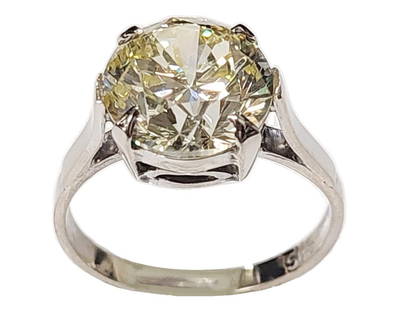

 Weekly: JewelryBonhamsSponsored.Your ad here?
Weekly: JewelryBonhamsSponsored.Your ad here?



Weekly: Jewelry
Bonhams
Sponsored.Your ad here?


 DesignChristie'sSponsored.Your ad here?
DesignChristie'sSponsored.Your ad here?



Design
Christie's
Sponsored.Your ad here?


 DesignChristie'sSponsored.Your ad here?
DesignChristie'sSponsored.Your ad here?



Design
Christie's
Sponsored.Your ad here?

Minatarre Big Bellied Indian KARL BODMER Hand Colored
Karl Bodmer Sale History
View Price Results for Karl BodmerRelated Necklaces & Pendants

More Items from Karl Bodmer
View MoreRecommended Jewelry
View More












Item Details
Description
Details: BODMER, Karl (1809-1893). Péhriska-Rúhpa. [A Minatarre or big-bellied Indian]. Paris, Coblenz and London: 1839-1842]. Hand-coloured aquatint engraving by Paul Legrand after Bodmer, state with three figures in the background, issue without imprint line or English sub-title. Sheet size: 24 1/4 x 17 3/8 inches.
There are two distinct states of this image: one with three small figures in the mid-ground to the right of the main figure, and a second where these figures have been removed
This powerful portrait of Péhriska-Rúhpa ('Two Ravens') presents the warrior and chief of the Hidatsa as a figure of great dignity. He adopts an attitude that would have been familiar to all men of power and rank, his worth displayed symbolically in his clothing and adornment. His shirt is trimmed with bands of bright yellow quillwork, elaborately fringed with ermine, locks of human hair and dyed horsehair. He wears a striped woolen breechclout and quilled leggings of deer skin. Around his neck is a necklace of bear claws, fastened to an otter-skin band and spaced with blue and white beads. Symbols of great wealth, these necklaces were made from the foreclaws of grizzly bears, preferably from animals taken in the spring when the claws were large comparatively unworn and showing white tips. A decorated buffalo robe over one shoulder and arm, Péhriska-Rúhpa holds his decorated pipe in the crook of his other arm. This is one of Bodmer's masterpieces of portraiture, and was carried out during the travellers' winter stop-over at Fort Clark in 1833-1834
Karl Bodmer's images show great versatility and technical virtuosity and give us a uniquely accomplished and detailed picture of a previously little understood (and soon to vanish) way of life. Swiss-born Bodmer was engaged by Prince Maximilian zu Wied-Neuwied (1782-1867) specifically to provide a record of his travels in North America, principally among the Plains Indians. In the company of David Dreidoppel (Prince Maximilian's servant and hunting companion), their travels in North America were to last from 1832 to 1834. Well-armed with information and advice, the party finally left St.Louis, on the most important stage of their travels, aboard the steamer Yellow Stone on April 10 1833. They proceeded up the treacherous Missouri River along the line of forts established by the American Fur Company. At Bellevue they encountered their first Indians, then went on to make contact with the Sioux tribe, learning of and recording their little known ceremonial dances and powerful pride and dignity. Transferring from the Yellow Stone to another steamer, the Assiniboin, they continued to Fort Clark, visiting there the Mandan, Mintari and Crow tribes, then the Assiniboins at Fort Union, the main base of the American Fur Company. On a necessarily much smaller vessel they journeyed through the extraordinary geological scenery of that section of the Missouri to Fort Mackenzie in Montana, establishing a cautious friendship with the fearsome Blackfeet. From this, the westernmost point reached, it was considered too dangerous to continue and the return journey downstream began. The winter brought its own difficulties and discomforts, but Bodmer was still able to execute numerous studies of villages, dances and especially the people, who were often both intrigued and delighted by his work. The portraits are particularly notable for their capturing of individual personalities, as well as forming a primary account of what were to become virtually lost cultures.
Graff 4648; Howes M443a; Pilling 2521; Sabin 47014; Wagner-Camp 76:1
For lots which include only books, our shipping charge applies to any address within the fifty United States. For lots which are not books, the stated shipping cost in this listing will apply only to addresses within the continental 48 states. Within those parameters, the shipping cost for this lot will be: $37.50
Buyer's Premium
- 25%
Minatarre Big Bellied Indian KARL BODMER Hand Colored
Estimate $2,500 - $3,500
11 bidders are watching this item.
Shipping & Pickup Options
Item located in Freeville, NY, usSee Policy for Shipping
Payment

TOP





































































